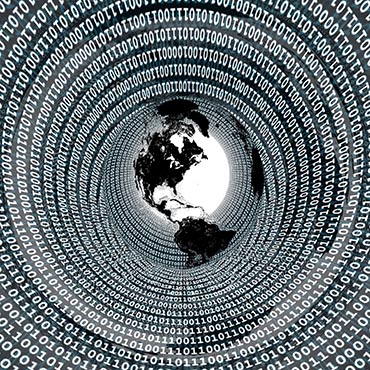Who really owns that government data?

The latest kerfuffle over stimulus spending data points to a wider problem with agencies' dependence on proprietary systems.

By the end of the month, data collected on federal stimulus spending over the past five years will disappear from public view -- not because the website, which always had an expiration date, will be gone, but because the government doesn't own the data.
Dun & Bradstreet does.
The Recovery.gov website tracks federal spending under the 2009 economic stimulus law through the unique identifier system called DUNS. But that license expires at the end of the month, and the Recovery Accountability and Transparency Board, which monitors the spending, is not renewing it.
So come Sept. 30, Dun & Bradstreet is taking its data and going home.
And while this is a prominent example of what can happen when private companies own government data -- the Washington Post highlighted the story last week -- it's hardly the only one. Critics say it points to a larger problem that is almost certain to happen again unless steps are taken to change the system.
We are a real-life example of what can happen when government uses proprietary data sets.... Since it's come to light now, people may find different ways to do this in the future.
By May 9, 2015, the Office of Management and Budget and the Treasury must come up with government-wide standards for tracking federal spending data, under the Data Accountability and Transparency Act.
Establishing those standards will provide an opportunity to decide whether to continue using DUNS, some other outside system, or to bring control of the data in-house.
"It's a much bigger question of where will data get housed and how will that work," said Nancy DiPaolo, chief of congressional and intergovernmental affairs at the Recovery Accountability and Transparency Board. "A website is a living thing and some of it involves licenses.... We have to ask ourselves as a contemporary society, how will modern government adapt?"
She also noted that with the way technology is evolving, government "needs to weigh the possible consequences of long term agreements or non-open sources as they make laws and decisions."
"We are a real-life example of what can happen when government uses proprietary data sets," DiPaolo said. "Since it's come to light now, people may find different ways to do this in the future."
Hudson Hollister, executive director of the Data Transparency Coalition and an early proponent of the DATA Act, said while sticking with the DUNS system may save time and headaches because employees won't have to learn a new system, less expensive and more transparent alternatives exist.
"As long as there's a proprietary identifier in place, it's not truly open data," Hollister said. "It's crucial to democracy that we make that information available."
Hollister suggested switching to a Legal Entity Identifier (LEI) system, which would cost less -- Dun & Bradstreet's eight-year contract is worth as much as $154 million -- and provide a non-proprietary system that would keep the data available to the public.
And LEI is a universal and unique computer readable code planned for identifying every financial market participant. The Treasury Department's Office of Financial Research is one of many government entities working to create a global LEI system that would not be controlled by a commercial vendor.
A 2012 Government Accountability Office report was critical of the DUNS contract, saying it "limits the purposes for which the government can use the data and hampers the ability to switch to a new numbering system."
It is having specific, identifiable harm on the federal government's ability to obtain the best value and most favorable terms with the taxpayer's dollar.
The report also said that the General Services Administration believes that "Dun & Bradstreet effectively has a monopoly for government unique identifiers that has contributed to higher costs."
The recovery board is not the only government organization that has data owned by a private company. In 2013, for example, the U.S. Forest Service was forced to effectively recreate its database of job descriptions when it switched vendors. And all data housed on the GSA's Federal Procurement Data System is owned by Global Computer Enterprises. In 2003, GCE was awarded $24 million to build, implement and operate the General Service Administrations FDPS Next Generation system. GCE is still operating the system today, Hollister said.
Last week, Reps. Darrell Issa (R-Calif.) and Elijah Cummings (D-Md.) wrote letters to GSA and the Office of Federal Procurement Policy urging them to remove specific references to DUNS numbers in acquisitions regulations so other potential vendors could be considered.
"In this case, it is clear that it is having specific, identifiable harm on the federal government's ability to obtain the best value and most favorable terms with the taxpayer's dollar," the two leaders of the House Oversight and Government Reform Committee wrote.
The letters pointed out that the U.S. Postal Service, which is not subject to the acquisition regulation, saved $6.4 million annually after not renewing its contract with Dun & Bradstreet in 2008. The Postal Service chose Equifax as its new vendor.
In a statement, GSA said it surveyed the industry in 2012 "in an effort to identify other sources." Ultimately it "received few responses" and the agency determined that Dun & Bradstreet was the "most suitable option due to the specialized services the company provides," according to the Post.


